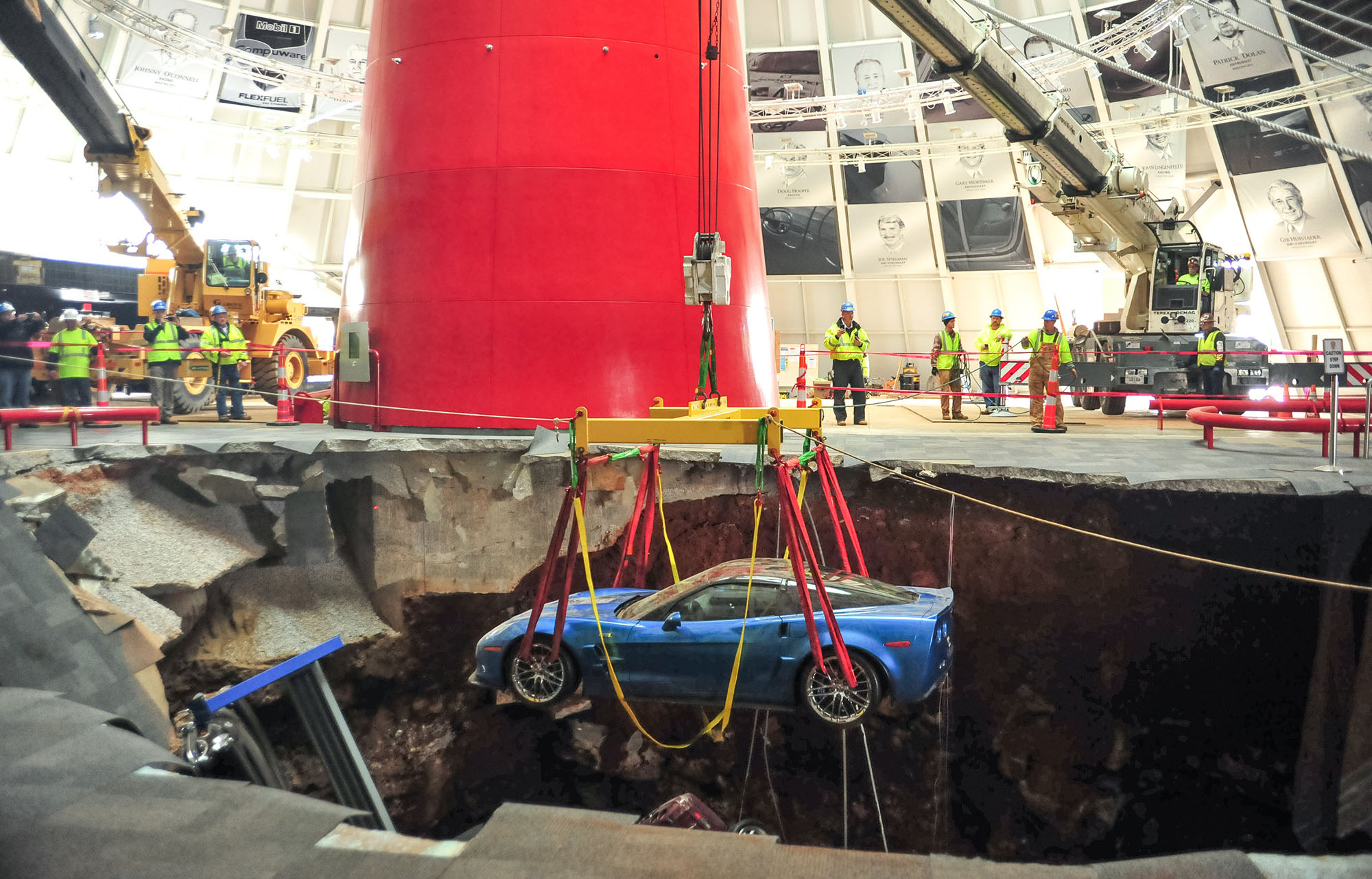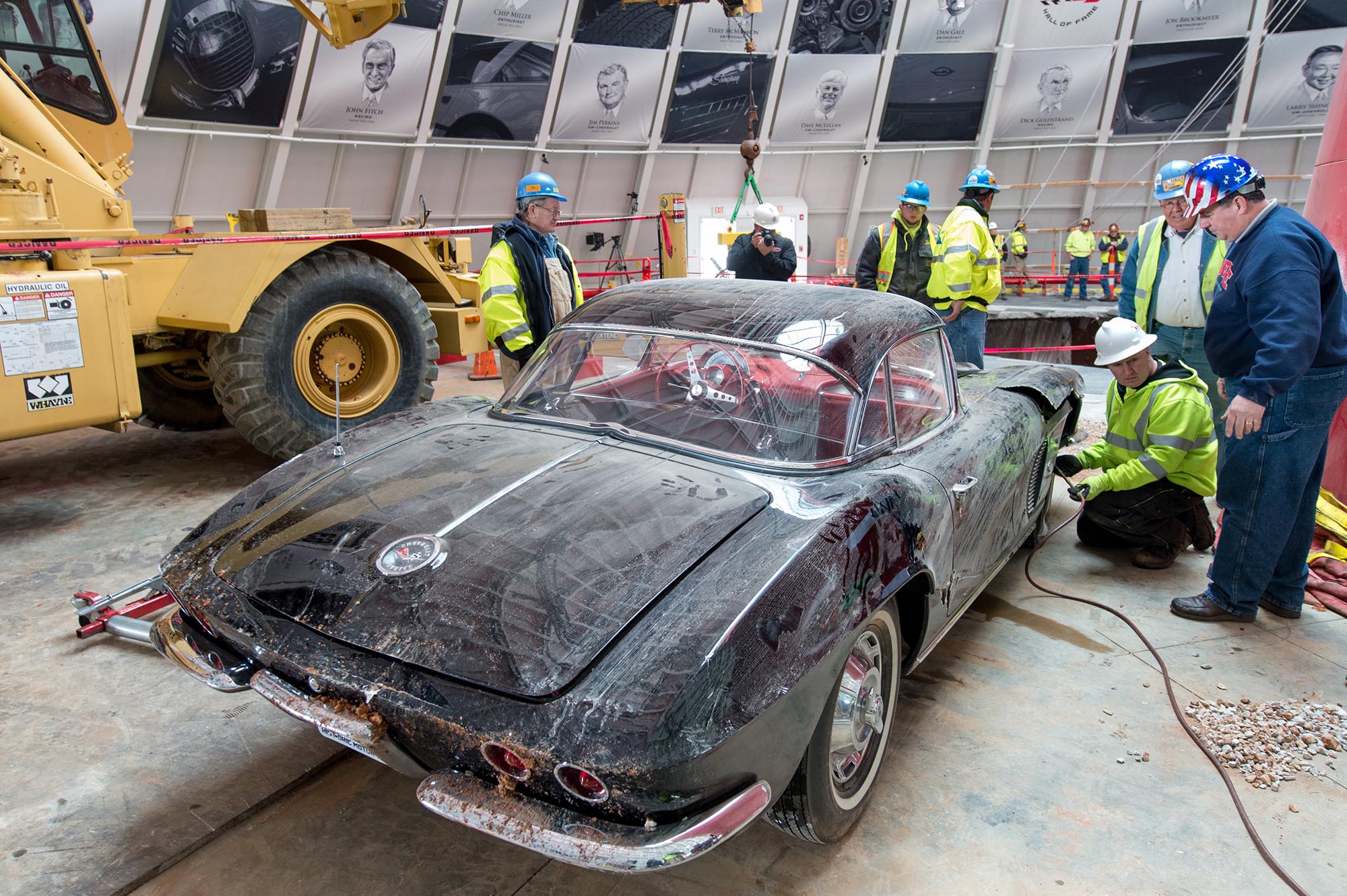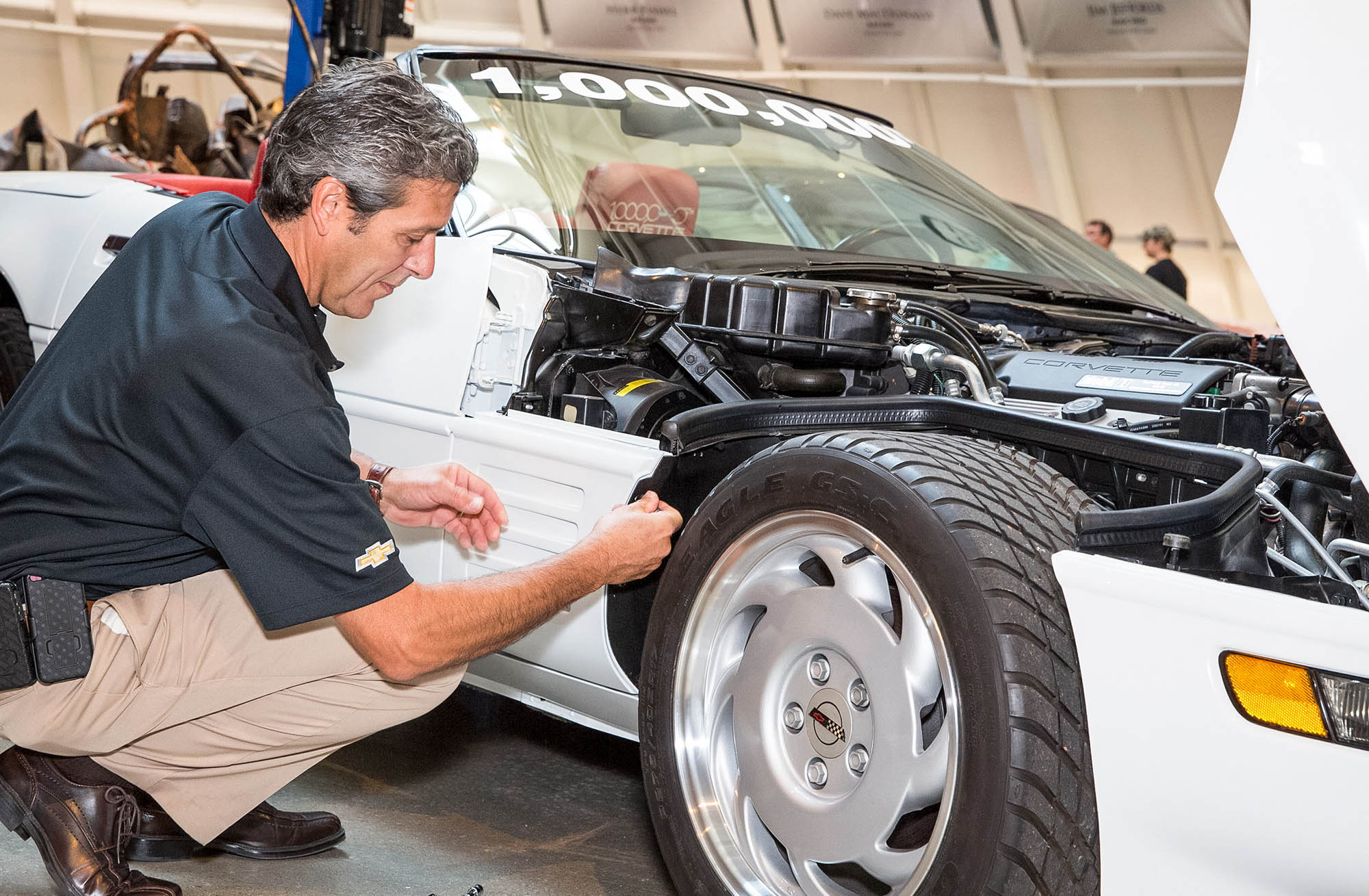10 Years Later: The Corvette Museum Sinkhole
How a potential disaster for fans of Chevrolet's iconic sports car was averted.
 Chevrolet
Chevrolet
In what sounds like a scene from a disaster movie, a sinkhole opened below the National Corvette Museum in Bowling Green, Kentucky, on Feb. 12, 2014. The museum was closed when part of the floor collapsed. Thankfully, no one was injured, but the incident damaged eight historically significant Chevrolet Corvettes.
 Chevrolet
Chevrolet
A Portion of the Corvette Museum Succumbed to a Sinkhole
Footage captured by Corvette Museum security cameras confirms the sinkhole opened shortly before 6 a.m. in February about a decade ago. The museum said the sinkhole was the result of the top of a previously unknown cave collapsing beneath the museum. The result was a 30-foot-deep hole below the facility's Skydome, where certain Corvettes were housed.
Repairing the damage required filling the hole with nearly 4,000 tons of crushed limestone and setting up 72 micropiles (foundation elements typically consisting of steel-encased rebar and grout) to stabilize the structure. The work was completed in July 2015.
 Chevrolet
Chevrolet
Eight Corvettes Were Damaged
The incident damaged eight cars that were on display. Affected vehicles included the 1993 Corvette ZR-1 Spyder (a one-off concept) and the 2009 Corvette ZR-1 Blue Devil prototype that had been loaned to the museum by General Motors. Also damaged were a 1962 Corvette, the 1984 PPG Indy pace car, the 1 millionth Corvette (a 1992 car), a 1993 40th Anniversary model, the 2001 Mallett Hammer Corvette Z06, and the 1.5 millionth Corvette (a 2009 model), which was owned by the museum.
The estimated cost of the cars damaged was estimated by vehicle valuation firm Hagerty to exceed $1 million.
 Chevrolet
Chevrolet
Some Were Repaired, While Others Are Displayed in As-Damaged Condition
At first, workers used cranes to pull the eight cars out of the sinkhole. They then discovered that the scope of the damage varied greatly from Corvette to Corvette. The 2009 ZR-1 Blue Devil prototype, for example, sustained relatively minor damage and was able to drive out of the museum under its power. The ZR-1 Spyder concept, the Mallett Hammer Corvette Z06, and the 1.5 millionth Corvette, however, were almost destroyed by the fall and the weight of the rubble.
The experts who assessed the condition of the eight cars decided that the 1984, both 1993s, the 2001, and the 2009 Corvettes were damaged beyond repair. The museum currently displays these vehicles in as-found condition, and their presence draws visitors each year.
By 2019, the museum's attendance had increased by 67%. Visitors can also look through a 48-inch viewing window to see a part of the sinkhole intentionally left unfilled.
GM volunteered to restore the 1992 and 2009 cars. The 2009 ZR-1 Blue Devil prototype returned to the museum after spending just six weeks at the GM Heritage Center. Bringing the 1992-built 1 millionth model back to like-new condition required substantial work. Mechanics retained as many original parts as possible, including body panels signed by workers who built the car.
The National Corvette Museum used in-house resources to restore the oldest of the damaged cars — the 1962 model finished in Tuxedo Black. The car was put back on display about four years after the collapse.
Written by humans.
Edited by humans.
 Ronan Glon
Ronan GlonRonan Glon is an American journalist and automotive historian based in France. He enjoys working on old cars and spending time outdoors seeking out his next project car.
Related articles
View more related articles